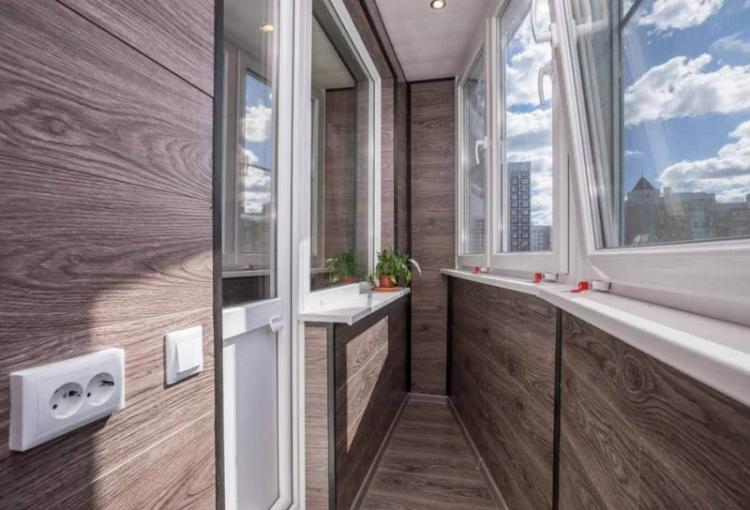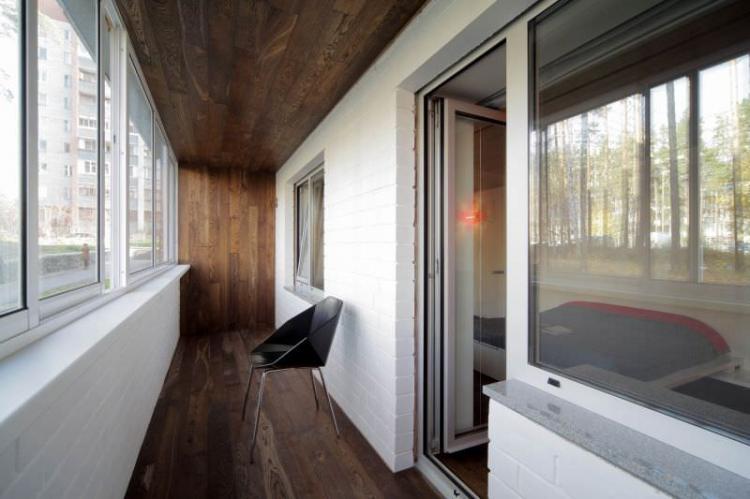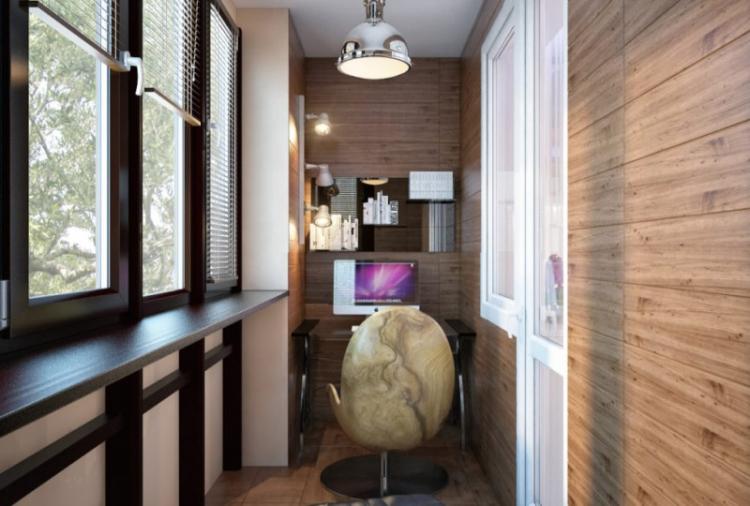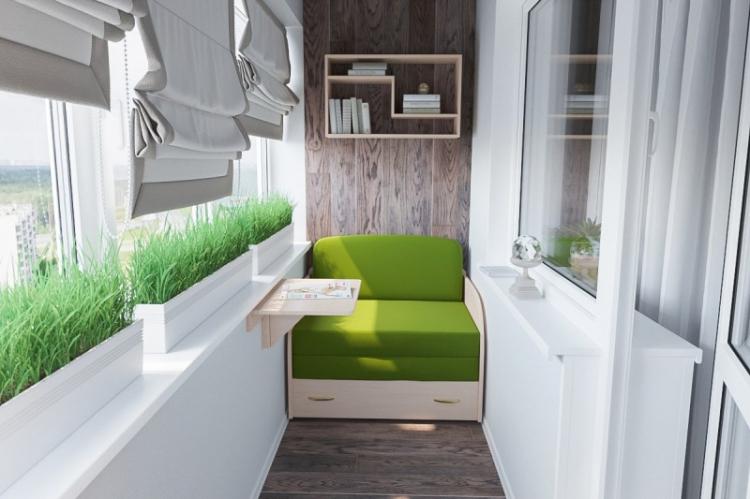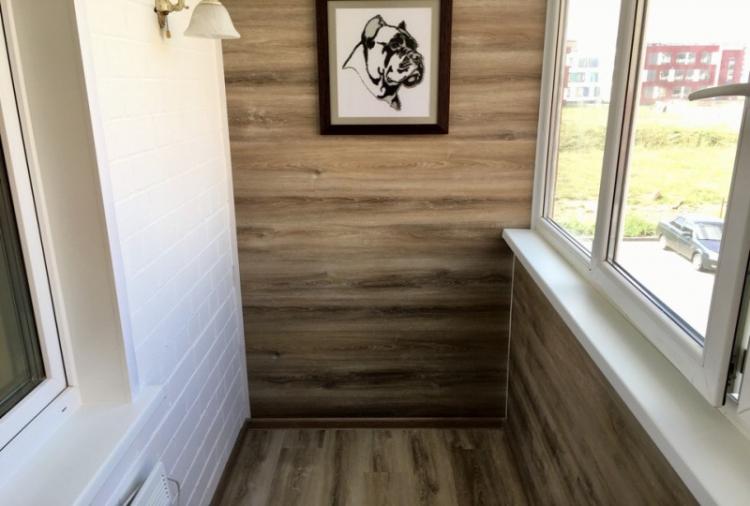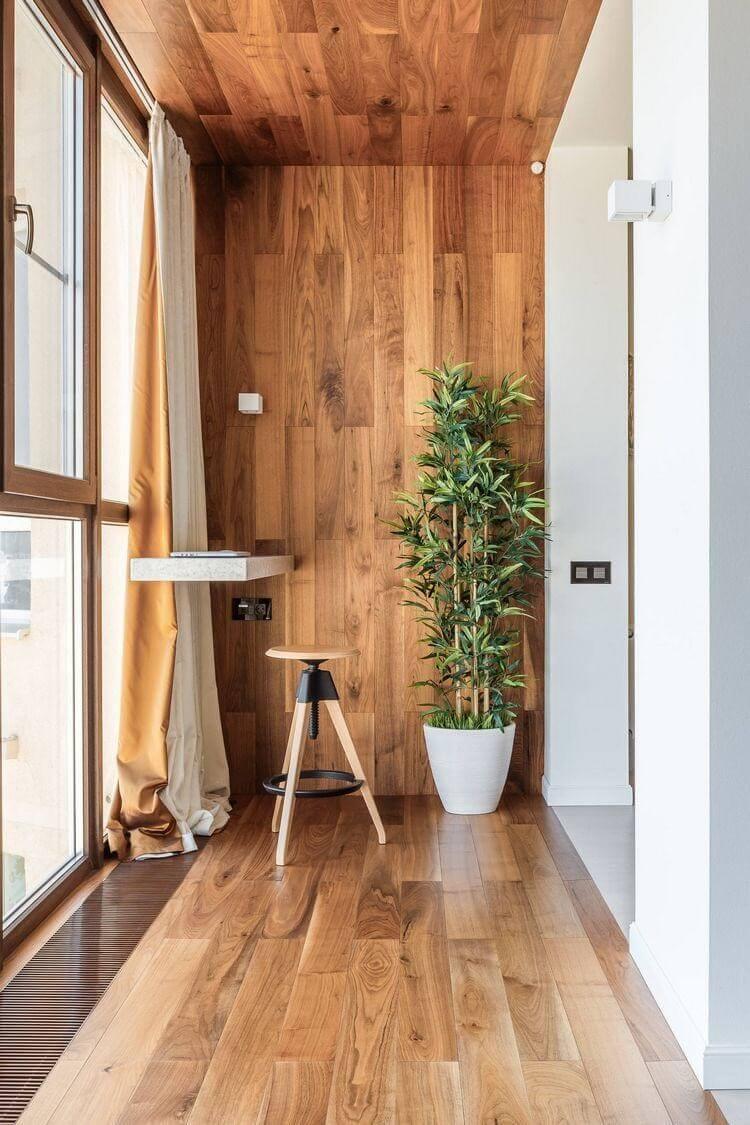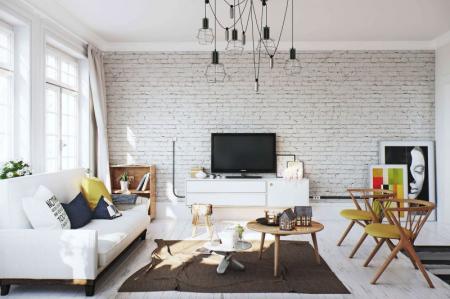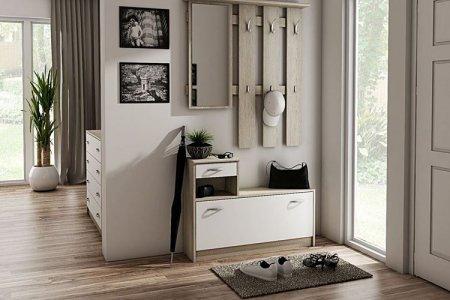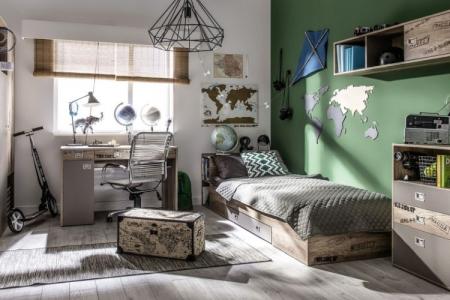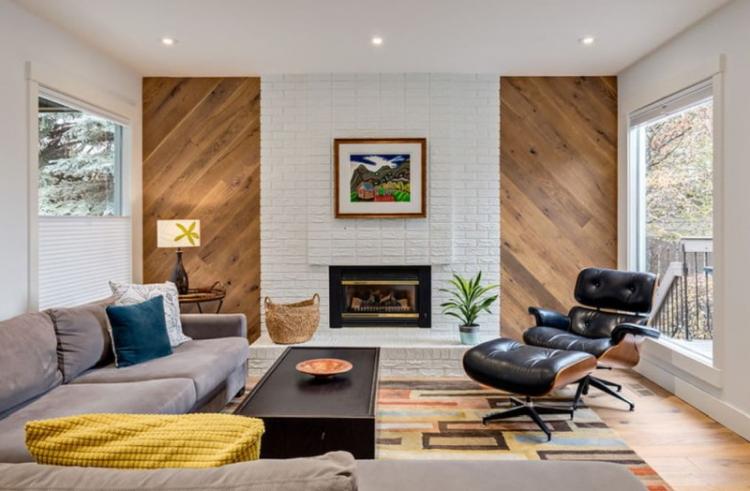
Are you looking for an interesting and unusual material for finishing an expressive accent wall? Do you like classic interiors and wood paneling, but is it too expensive and not practical? We have a solution to your problems! Laminate on the wall will perfectly cope with these tasks, will not require huge investments from you and will not cause difficulties in use. And we will tell you how to choose it and what to do with it!
Advantages and disadvantages
Laminate is a relatively inexpensive and affordable material that is much cheaper than real wood panels. At the same time, in terms of quality, it is in no way inferior to them, if you choose the right class of wear resistance. Even externally, it is quite difficult to distinguish a high-quality laminate from the wood under which it is made.
Decor
Collections of large manufacturers delight with a variety of shades and textures. In addition to the classic wood-like laminate, there are whole series for stone, masonry, monolithic color coating and other interesting solutions.
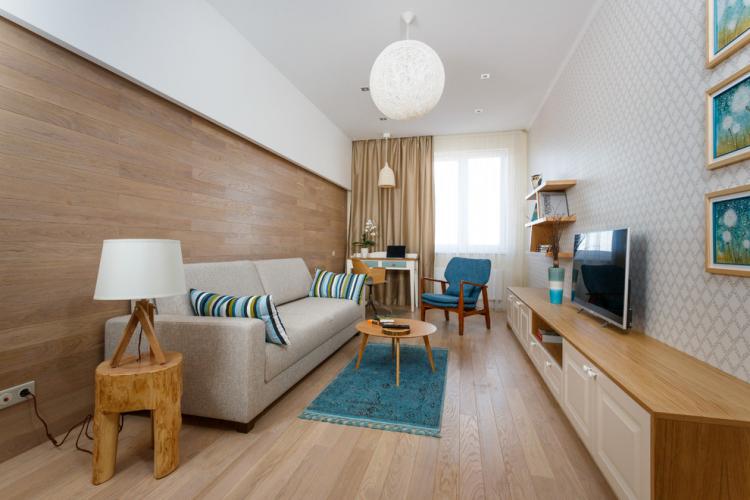
Wear resistance and insulation
Hard-wearing laminate is a practical flooring that does not require complex maintenance, unlike natural boards. It can be wiped with a regular cloth and polished with special products.
Laminate wall decoration improves the heat and sound insulation characteristics of the room. And if necessary, there are special moisture-resistant, fire-resistant and shock-resistant collections.
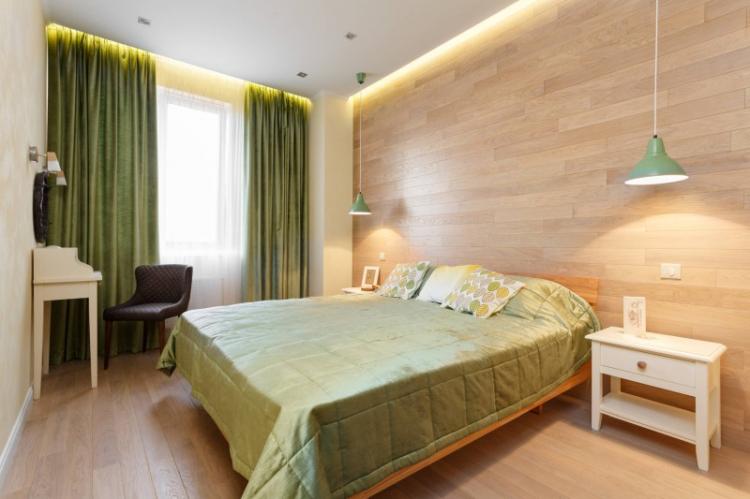
Application
You can handle the installation of laminate even on your own thanks to convenient locks. Of course, when laying the covering on the wall, there are some nuances regarding the laying of the laminate on the floor. But even this can be dealt with if you approach the issue carefully and carefully.
Laminate is a lightweight material compared to heavy woods, ceramic tiles or natural stone. Due to this, it does not overload the base and even decorative plasterboard structures can be sheathed with it.
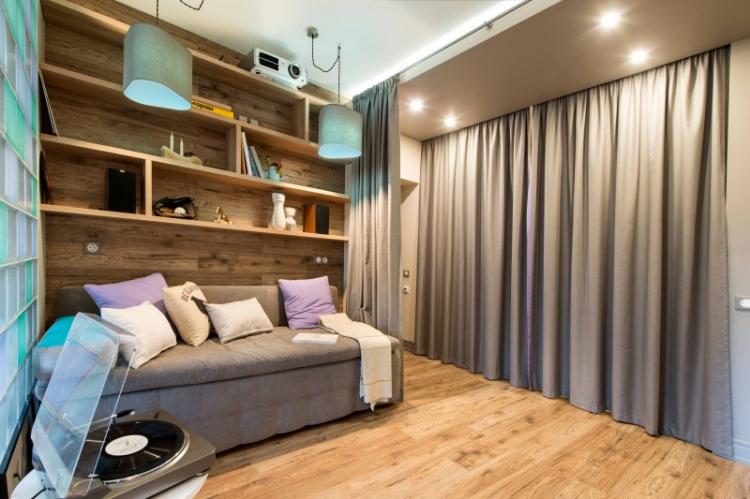
Flaws
When laying laminate flooring, the wall must be perfectly flat and without drops, otherwise you will need a crate. The material is sensitive to humidity and temperature changes, so only specialized series are suitable for kitchens and bathrooms. Such cladding requires space and takes up valuable centimeters, which is why it is not the best option for small rooms.
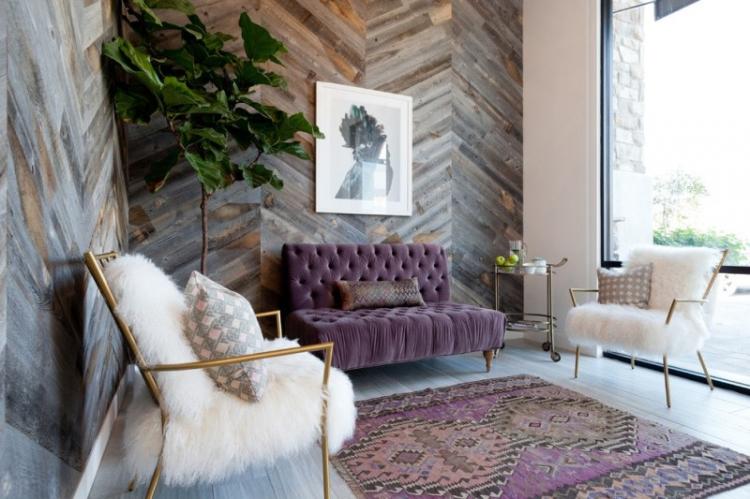
Color solutions
Most often, a classic laminate is laid on the walls under wooden panels. In private homes and classic interiors, it looks good as a base material.
But you can use it instead of an accent: to decorate functional areas, TV niches, spaces behind the headboard. In small rooms, it looks stylish when creating a transition from wall decoration to floor decoration. This technique visually enlarges the room and corrects its geometry.
Light, bleached or aged laminate will fit into rustic country and romantic Provence. And dark panels imitating precious woods are good in neoclassic, English or modern styles.
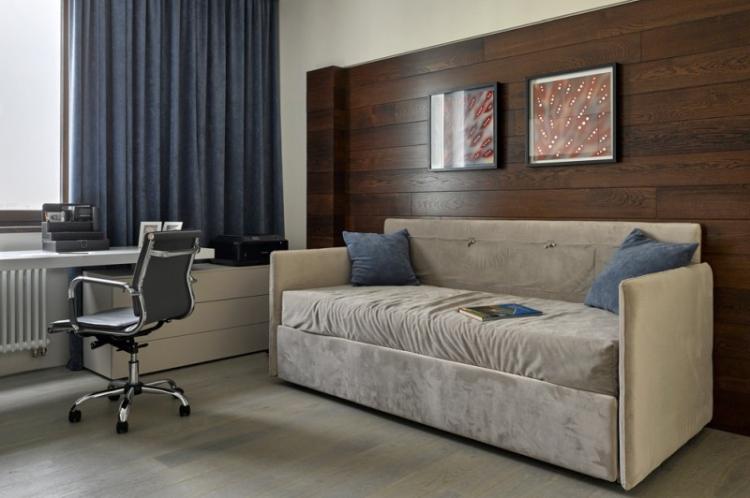
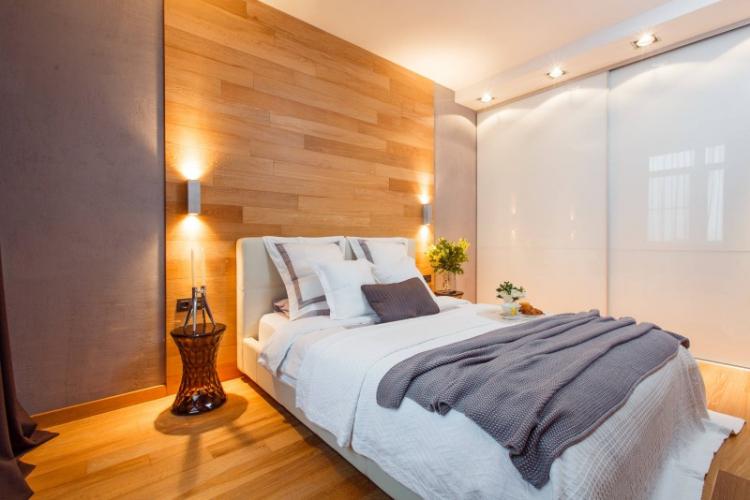
Laying and installing laminate on the wall
There are different ways of installing laminate flooring on walls, depending on the desired effect, the type of coating and the quality of the substrate. Unlike floor mounting, auxiliary materials are often used here so that the boards do not shift over time.
The easiest option is for special glue or liquid nails, but it is only suitable for a perfectly flat base. Of the mechanical fasteners, clamps are used - the same as for MDF panels.
If there are significant wall defects or level differences, lay the laminate on a wooden crate. The frame base is made of timber, pre-treated with a primer and antiseptics. Less commonly, a metal frame made of aluminum profiles is used: it is suitable for heavy and massive boards.
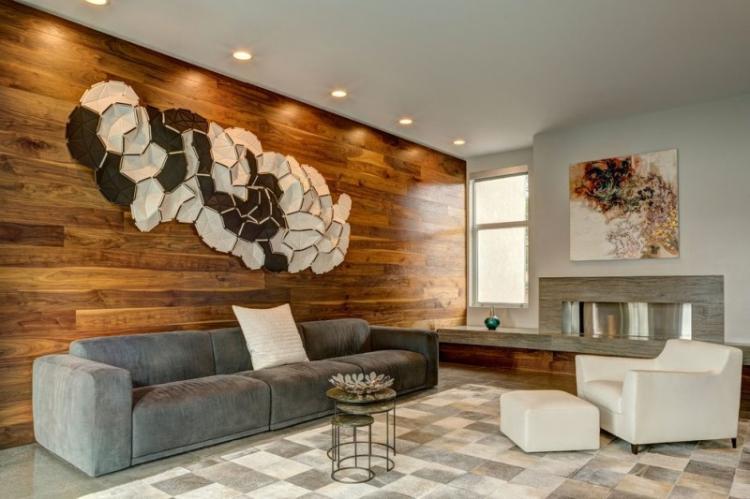
The lamellas do not have to be laid strictly horizontally and vertically. As with flooring, diagonal installation, offset installation, checkerboarding, various combinations and transitions are used. The main thing is to draw a diagram and dock the boards with each other and with the corners of the room.
For work, you will need a puncher, a building level and a tape measure, a screwdriver, a hammer, pliers and a jigsaw, different types of spatulas and a container for mixing glue. And do not install freshly acquired laminate flooring: it should lie in the room for at least a few days.
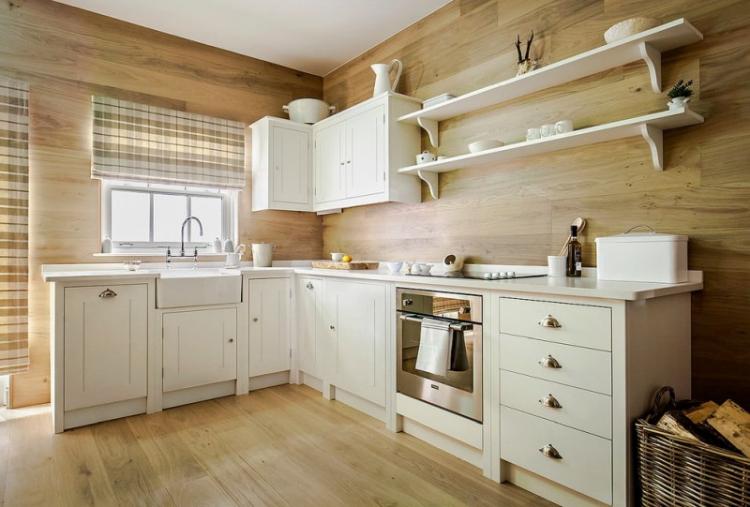
Frame installation allows you to hide all communications inside and lay an additional insulating layer. The step between the timber and the profiles depends on the size of the lamellas - it should be convenient to fasten them. Carefully check the level of the extreme bars, because the plane of the entire coating depends on them.
If the laminate is laid vertically, the frame is horizontal and vice versa. When laying boards, use holders so that they do not move, because the quality of all work depends on the first row.
Do not forget about the temperature gaps at the floor and ceiling: they can be hidden with special skirting boards and strips. And treat the joints with silicone sealants so that the coating is stronger and more durable.
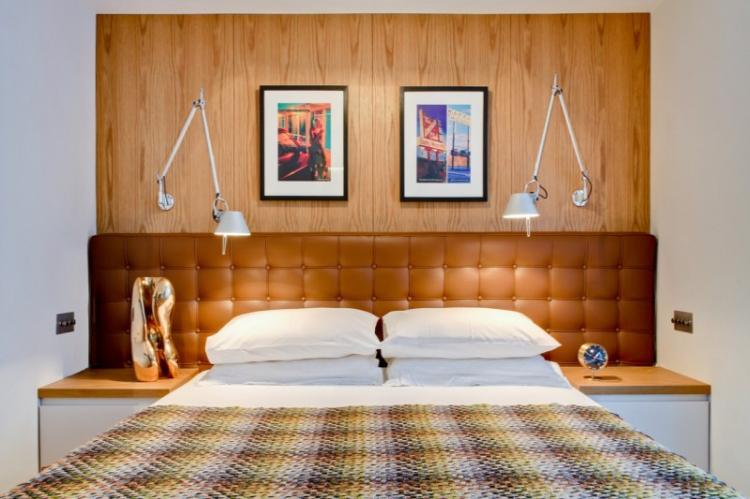
Laminate on the wall in the interior - photo
The possibilities of using laminate flooring in the interior are almost endless. Natural wood texture will fit into almost any interior from classicism to fashionable Scandinavian style.
Laminate on the wall in the kitchen
The covering of the kitchen walls must be strong and durable, so do not skimp on the laminate class. Choose moisture-resistant collections so that they can be easily cleaned of stains and grease.
Do not forget that with temperature changes, the laminate quickly loses its attractive appearance. Therefore, if you want to use it for covering the apron and work area, it is better to install a protective glass panel on top. It looks stylish, will last many times longer, and it will be much easier to care for the surface.
Laminate is good for zoning, so you can highlight it with an accent wall at the bar or dining area. If you have a large kitchen or a spacious studio, use it to separate the recreation area.
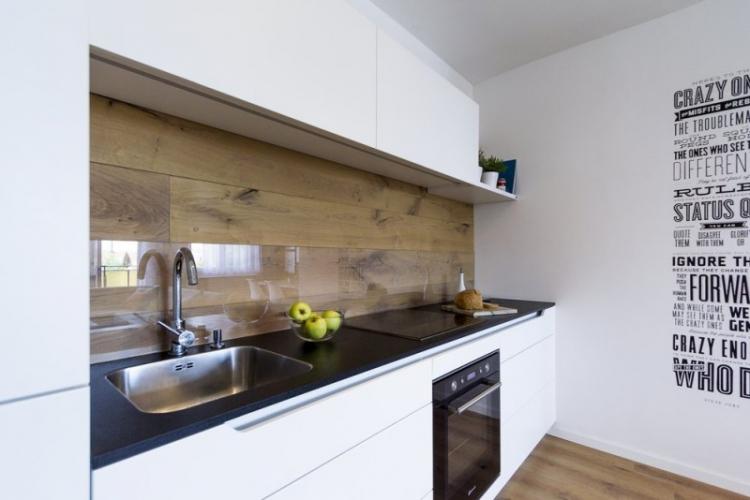
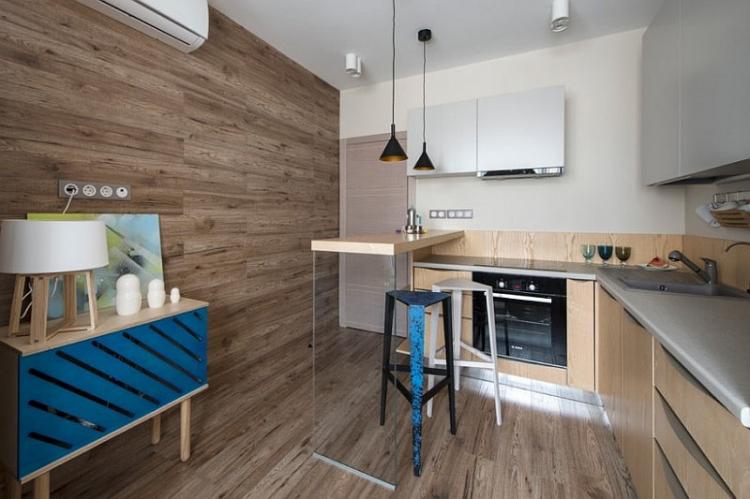
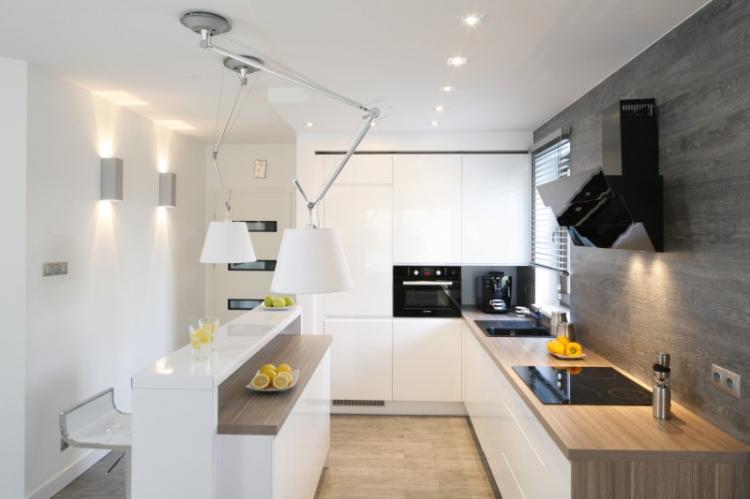
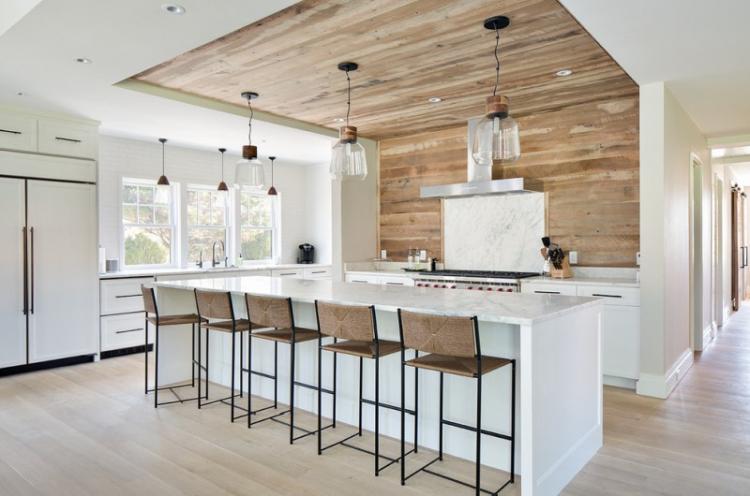
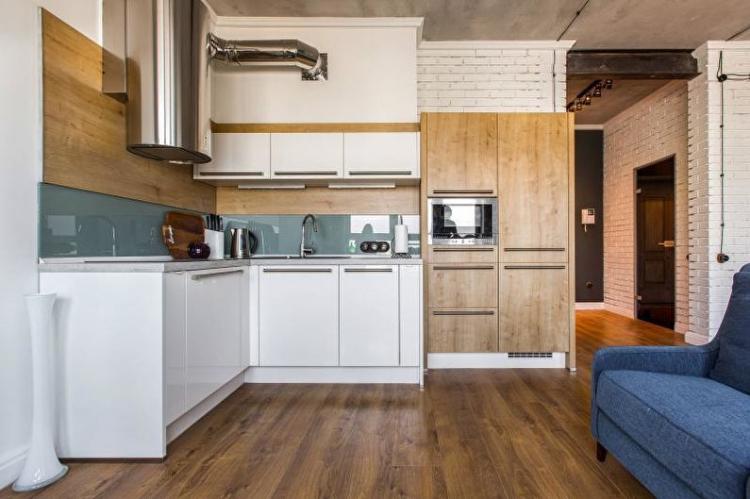
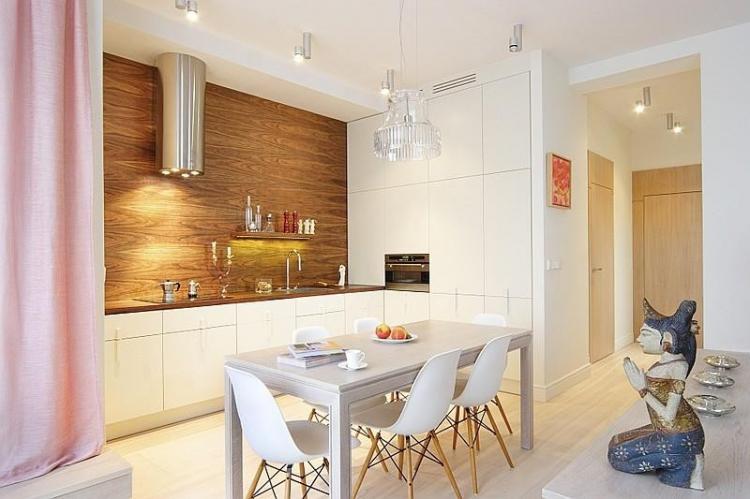
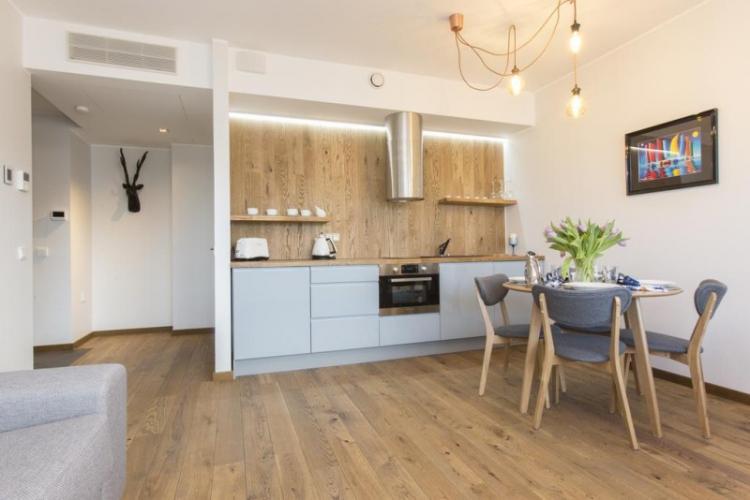
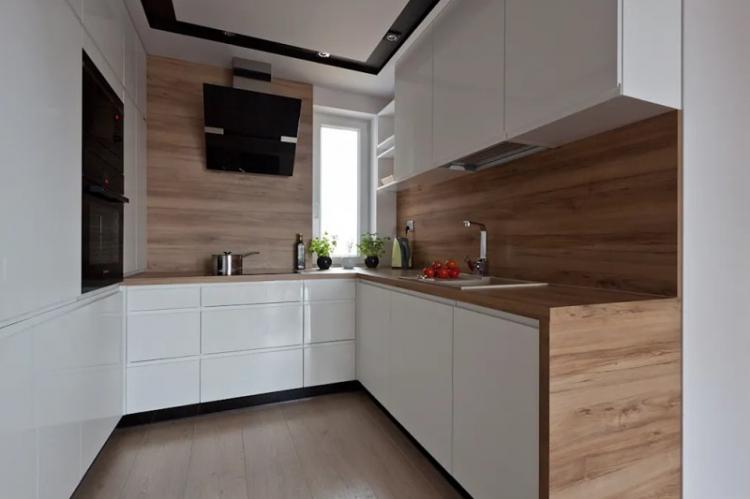
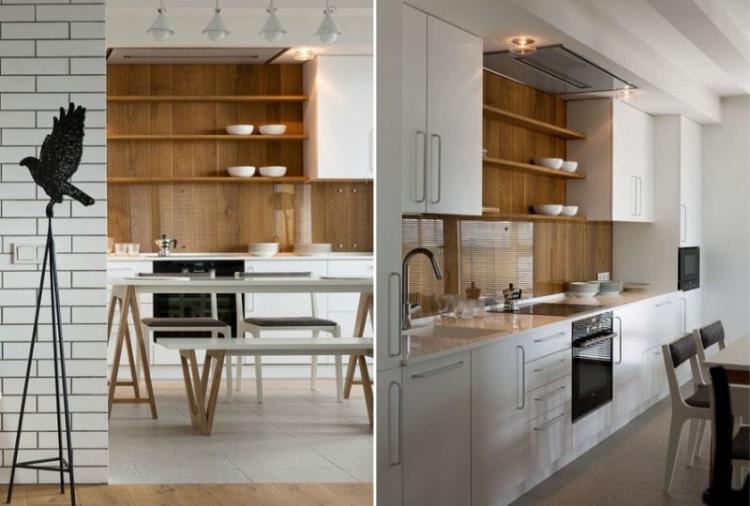
Laminate on the wall in the living room
Decorate the wall under the TV, by the fireplace or around the aquarium with laminate - it always looks expensive and noble. Another convenient trick is to sheathe a separate corner where you can place a sofa or work area.
The cladding under the old rough wood will harmoniously complement an industrial loft or grunge. This is a good alternative if you don't want to waste time on brickwork. On top of the sheathing, there are massive open shelves and decorative lamps.
Laminate flooring for noble grades will complement classic interiors and their modern interpretations. They can also sheathe niches and arches with simple and laconic geometry. And if you choose the right direction of the panels during installation, you can visually enlarge the room or raise the ceilings.
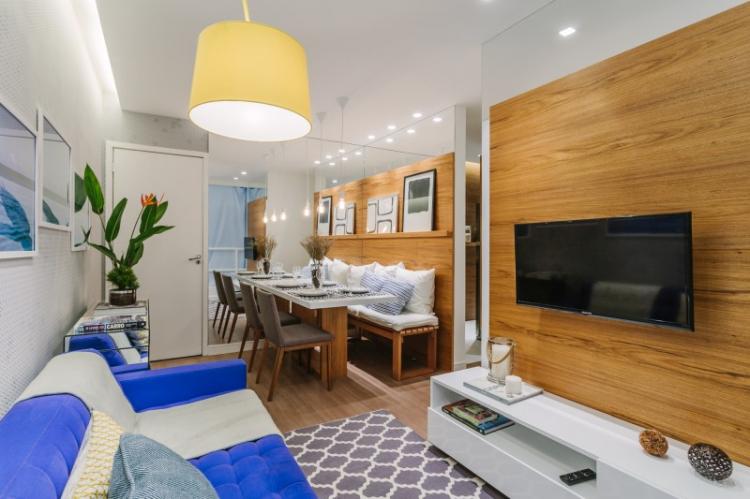
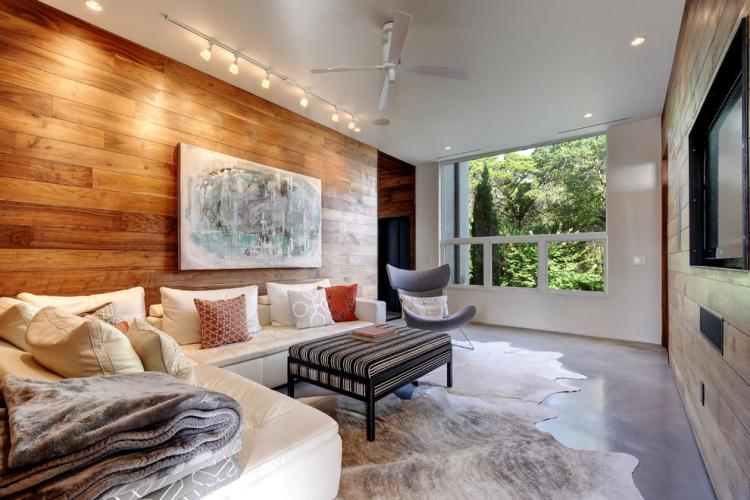
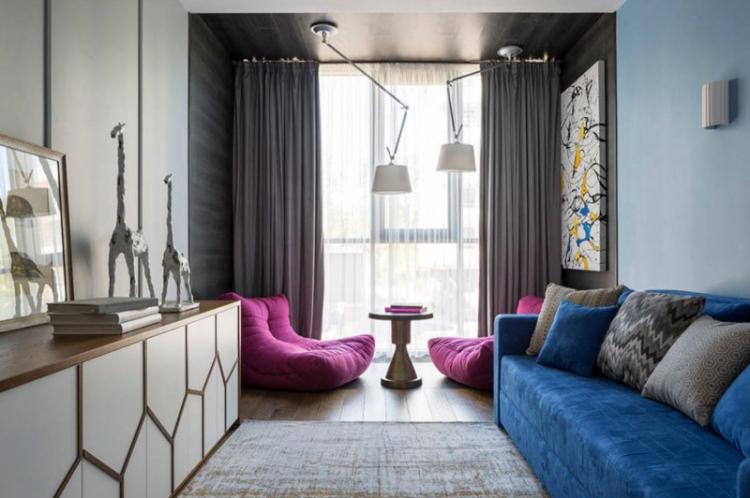
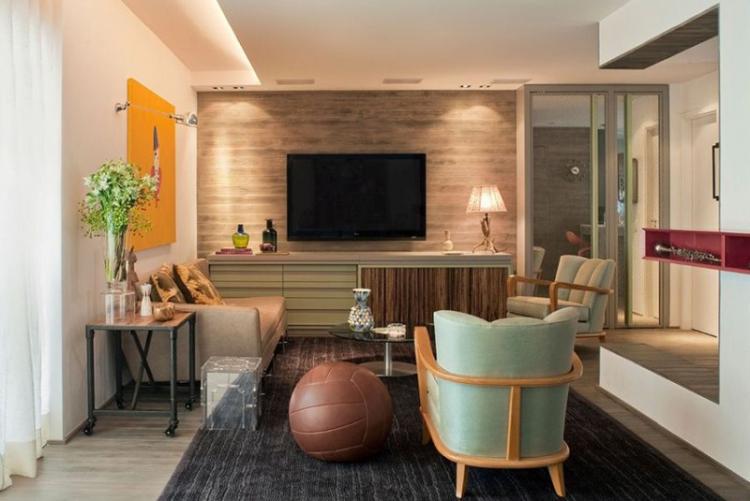
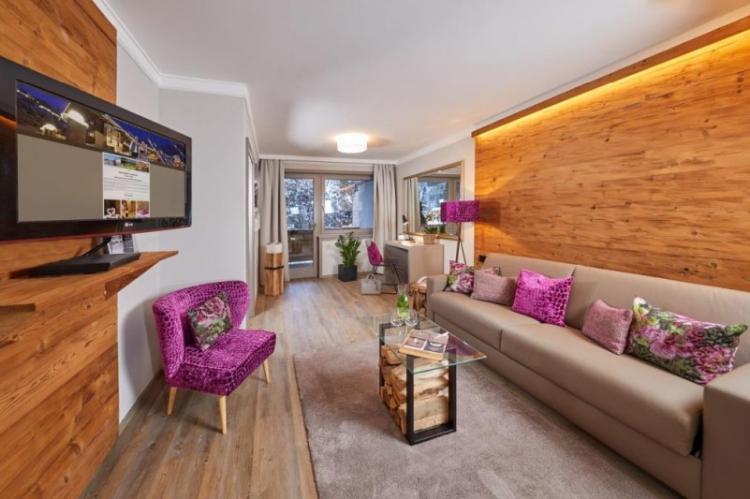
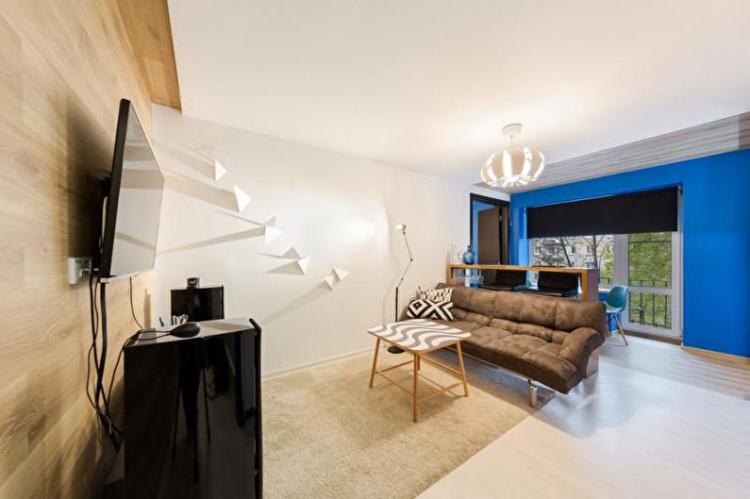
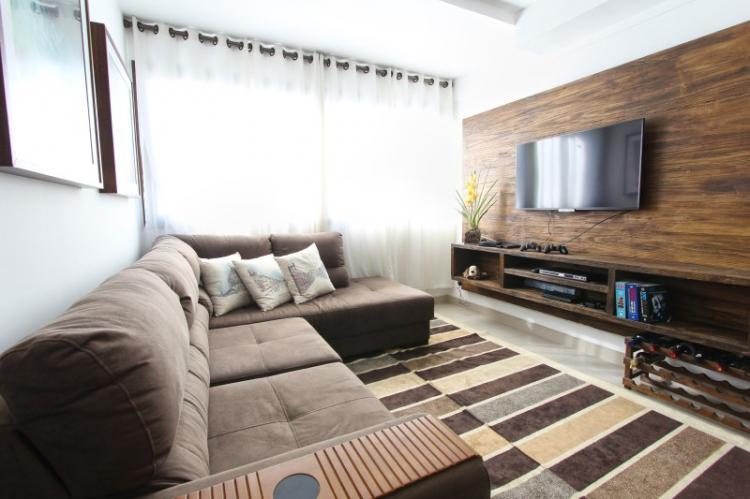
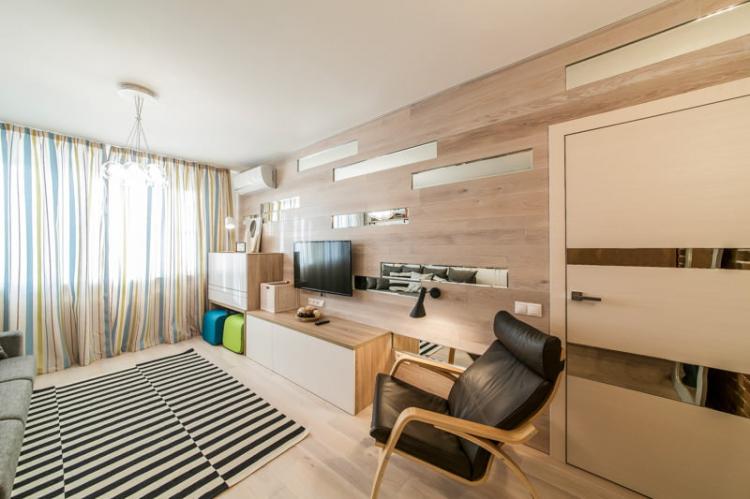
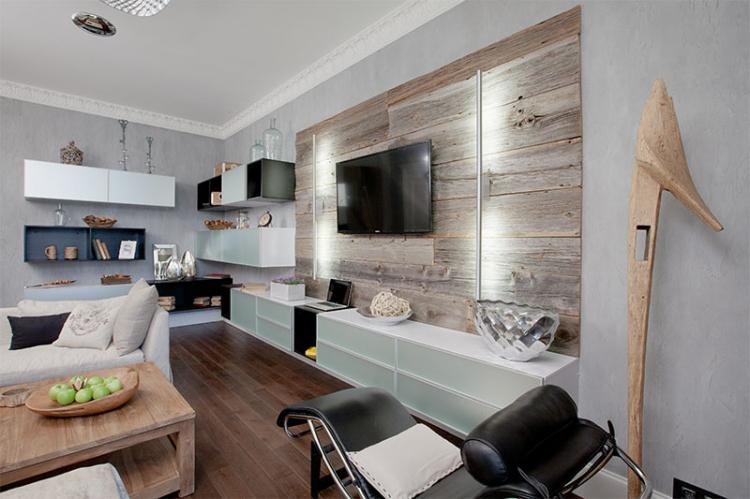
Laminate on the wall in the bedroom
Wood finishes are always associated with warmth, comfort and home. Therefore, in the bedroom, such elegant natural materials come in handy.
The smooth transition of the same covering from the floor to the wall looks interesting. Thus, it is possible to highlight the bed area, especially in interiors that gravitate towards pronounced centers and a symmetrical composition. Install bedside tables with bedside lamps or wall lamps on both sides.
If you don't have enough wooden furniture in your bedroom, you can safely sheathe large areas with laminate. Then the texture will not be repeated too often and does not look overloaded. And if you just want to freshen up the interior a little or decorate a small bedroom - a wooden panel made of laminate boards looks fresh and original.
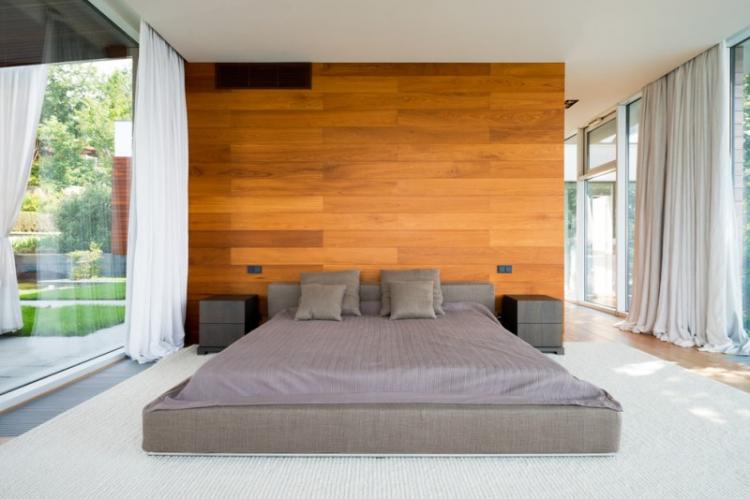
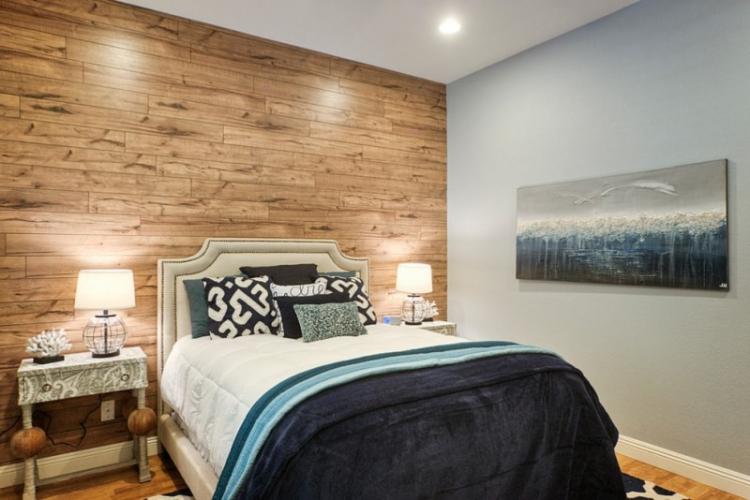
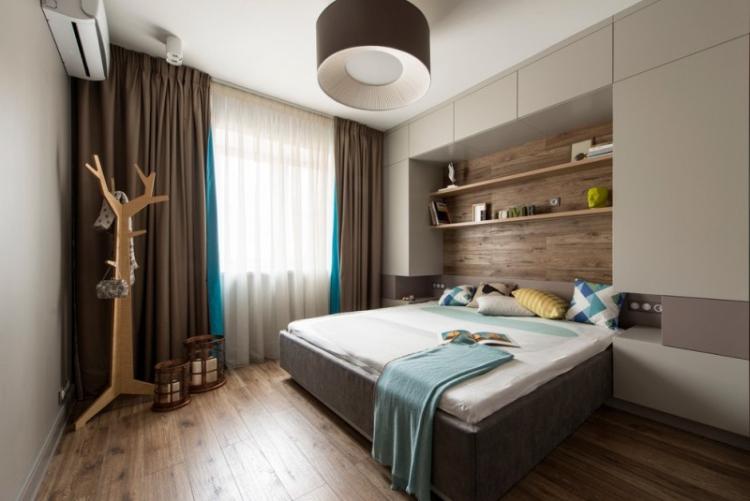
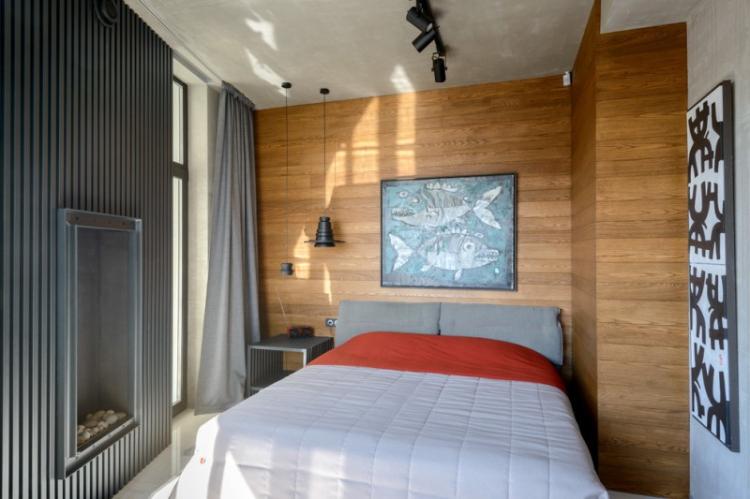
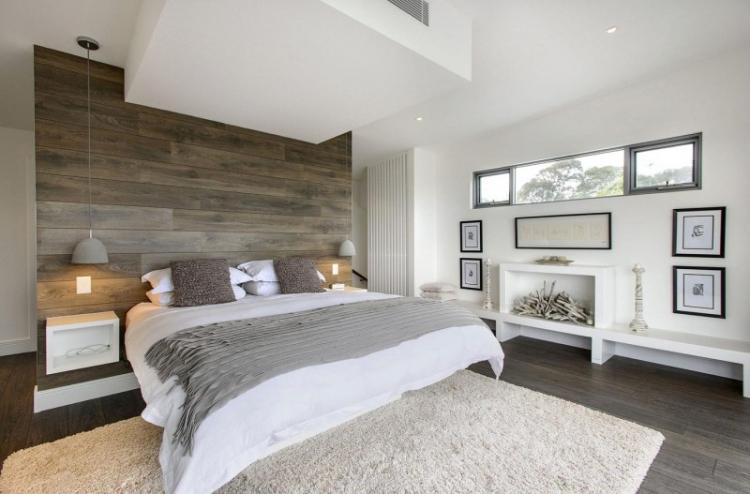
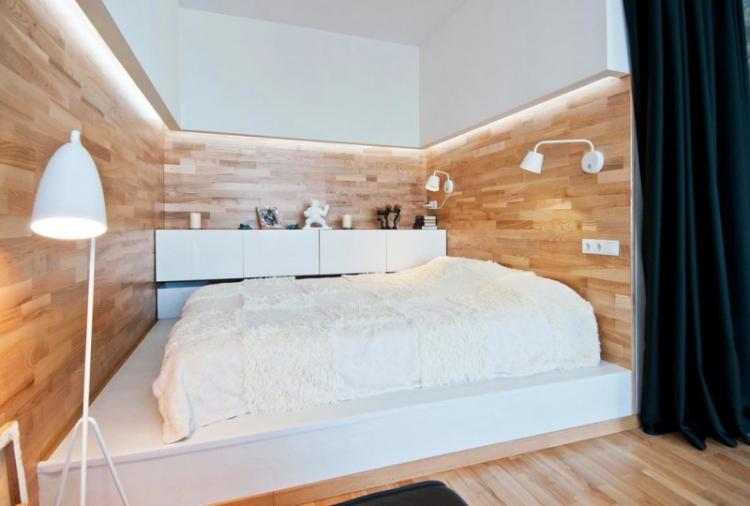
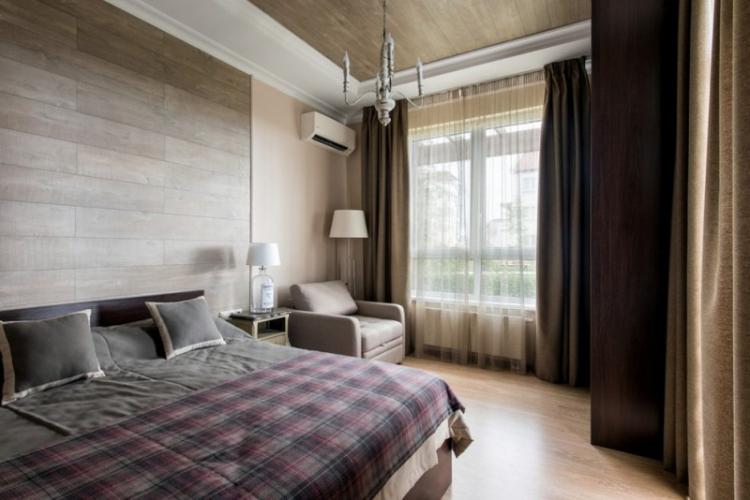
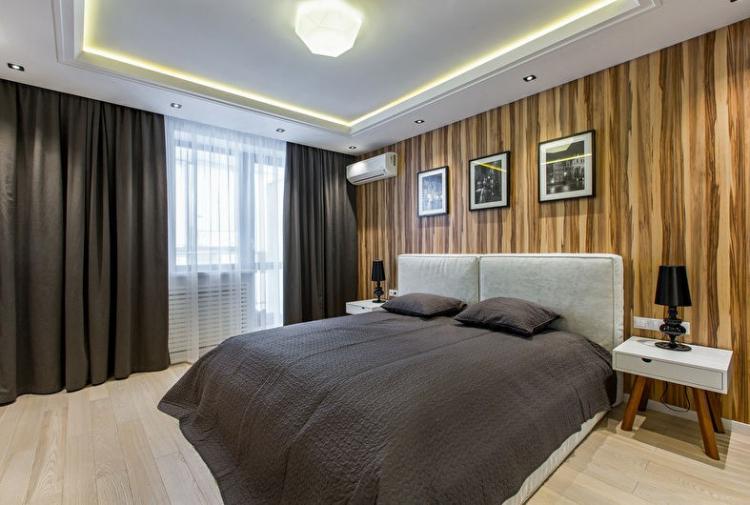
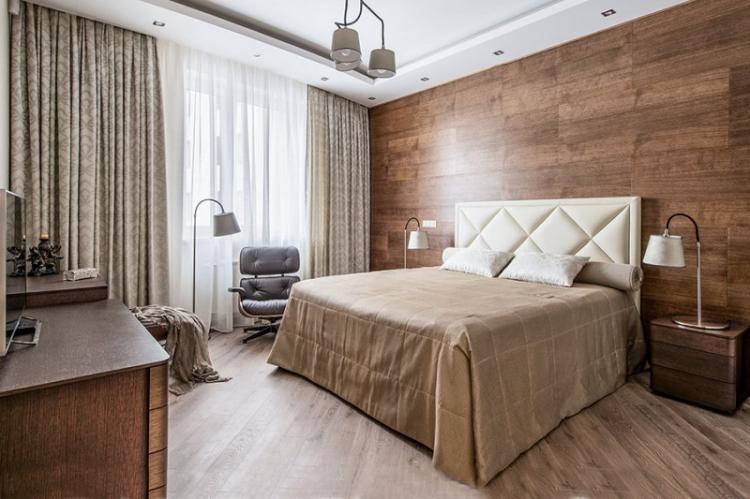
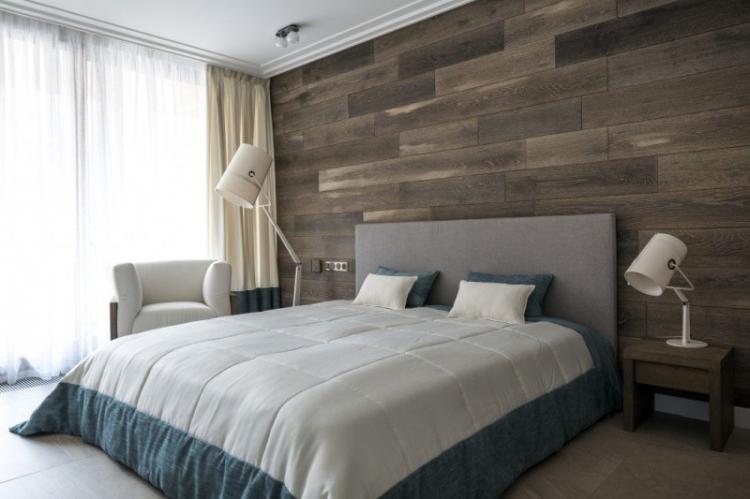
Laminate on the wall in the hallway
Laminate on the walls in the hallway creates a coherent and harmonious composition when combined with the flooring.You can choose one design, but different classes of wear resistance, so as not to overpay.
In spacious and bright rooms, the combination of wall laminate with brickwork, stone or textured wallpaper looks interesting. If the hallway is small and narrow, only a small lower strip of the wall has been lined with laminate - and this will help you visually correct the geometry.
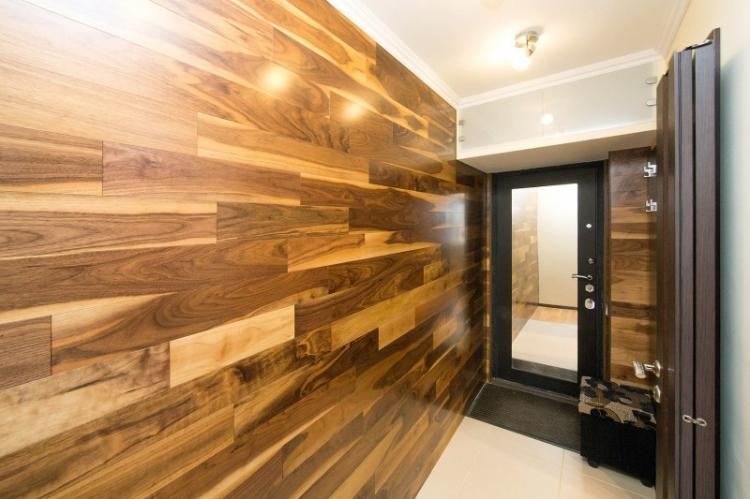
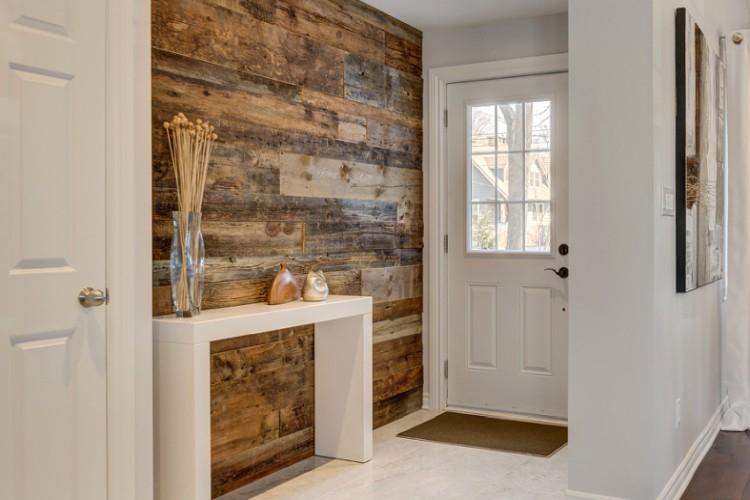
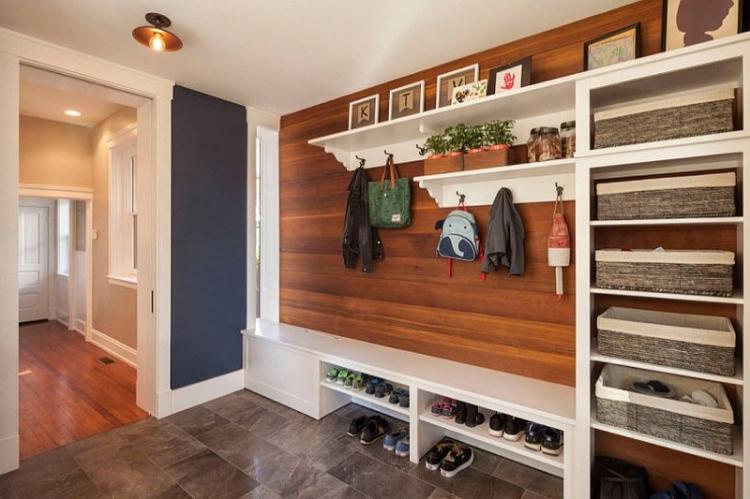
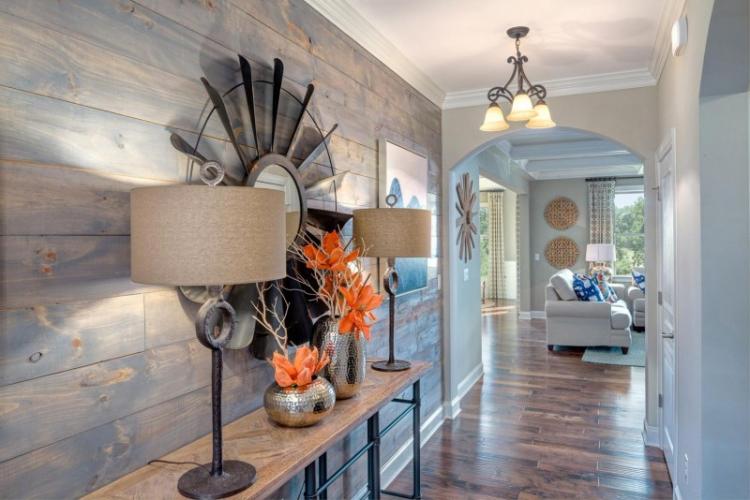
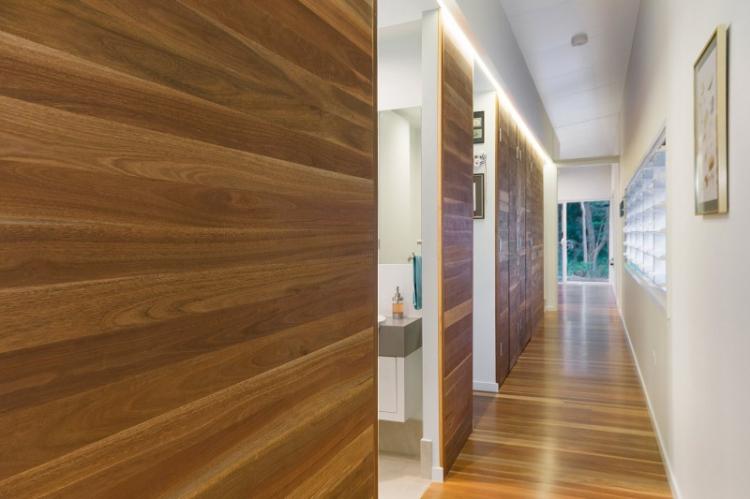
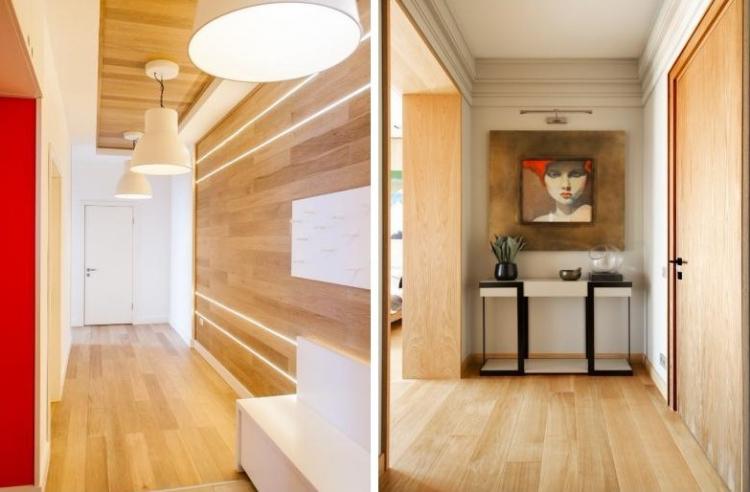
Laminate on the wall on the balcony / loggia
Laminate flooring is not suitable for open loggias because it will deteriorate quickly due to weather conditions. But on ordinary glazed balconies, it is practical and appropriate. The main thing is high-quality thermal insulation, because if in winter the temperature drops below + 5-7 degrees, the coating will deteriorate over time.
For balconies, choose moisture-resistant collections with an additional protective coating against ultraviolet radiation. This will prevent the boards from swelling, cracking or fading in the sun. And so that the panels do not deform due to weather changes, fix them not too hard and not on standard laminate locks.
